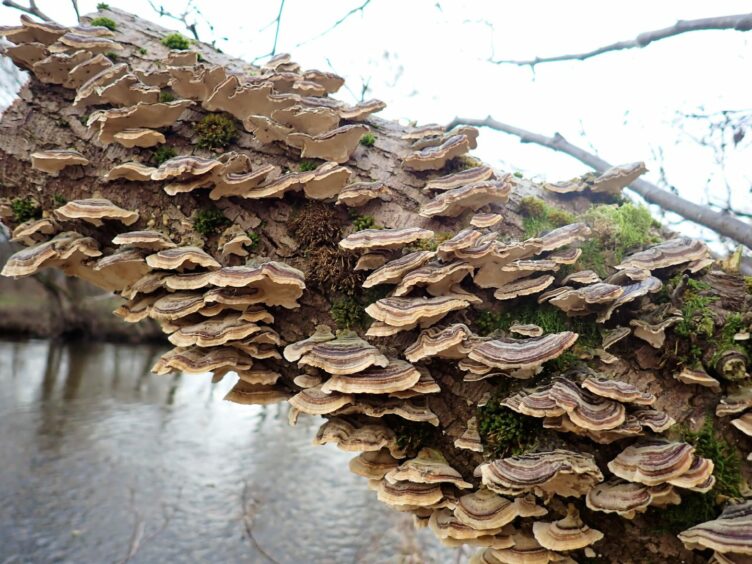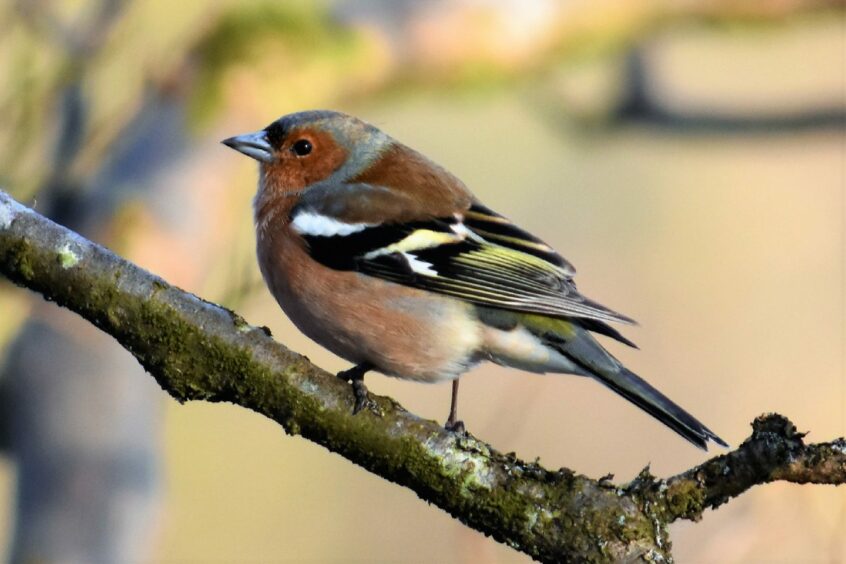There were plenty signs of beaver activity as I ambled along the bankside of the River Earn near Crieff.
Some small birches had been felled, and parts of the bark of other trees had been stripped.
However, one tree really caught my eye because it looked as if there were nodules of fungus growing close to where a beaver had been gnawing.
Reaction to stress
I brushed my fingers across the spherical golf-ball sized growths.
They were hard and an integral part of the tree itself.
I may be wrong, but I suspect these were burrs – rounded growths that are often a reaction to stress, such as injury or damage, insect attack, or bacterial or fungal infection.
Sometimes burrs can become very large, but these were small and rounded, with a certain ethereal beauty.
Burrs are in effect a protection mechanism, forming over or near an area of trauma to prevent any further damage.
They do not harm the tree and are part of nature’s tapestry of intricate responses to the daily challenges of life.
In woodwork, large burrs can be much sought after because of the unique swirling patterns they instil in the grain of the wood.
Soaring buzzard
I moved further along the riverbank and stopped to watch a buzzard soaring above the river on wide-splayed wings.
Buzzards are thinking about breeding and it is wonderful to watch them displaying to one another in the sky, their haunting mewing calls carrying far in the wind as they circle on updrafts.
Then, a red glimmer by the path side, shining with the intensity of a glowing ember.
I crouched down to examine this ruby gem, which turned out to be a scarlet elfcup.
I couldn’t recall the last time I had encountered this scarce fungus, but it was certainly a while ago, and they are most enchanting in their shape and form.
They are most often found in late winter and early spring, and as the name suggests, the cap is cup shaped.
Also known as ‘fairies baths’, folklore has it that wood elves and fairies drank morning dew from the cup.
Nearby, tiers of turkey-tail fungus clung to a branch.
This is a distinctive species which should have been past its best by now, but this cluster was an exception and still exhibited vibrancy.
Fluttering chaffinch
A cock chaffinch fluttered up into a birch ahead of me.
This one remained silent, but soon it will be uttering its spring song.
It is a simple song, lacking the depth and variation found in other birds.
On a visit to England, John Burroughs, the renowned late 19th and early 20th century American naturalist, was amazed at the number of chaffinches he heard.
He wrote: “I have never heard a song that began so liltingly end with such a quick, abrupt emphasis.”
On the far bank of the Earn, a blackbird sang his rich and fluty melody that drifted across the river like a welcoming herald to spring, sweet and pure, and encapsulating perfectly the season of new life.





Conversation